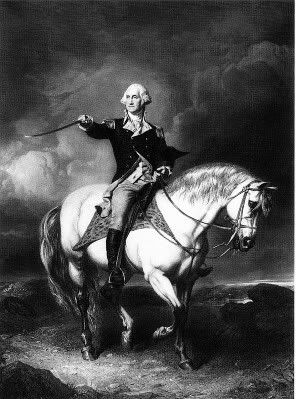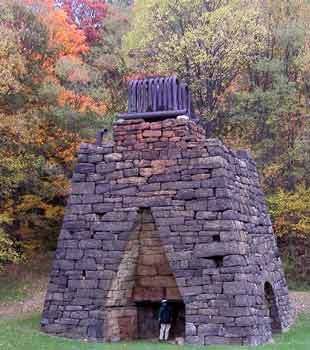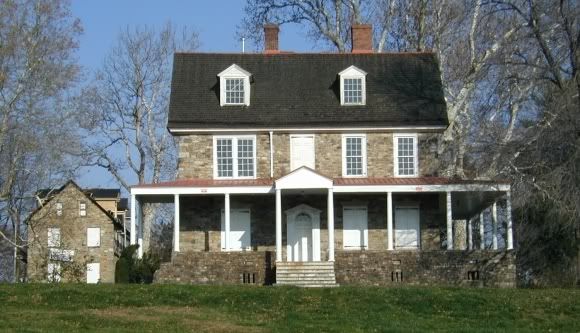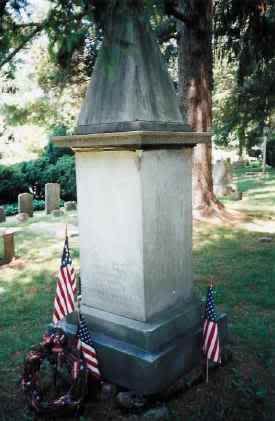
George Washington from Freedom Heroes
It was the second day of fighting at Gettysburg, and the situation was looking grim for Colonel Joshua Chamberlain's 20th Maine troops at the Little Round Top. Out of ammunition and picked apart by the 15th Alabama regiment, it looked like the end of line for the Yankees.
Chamberlain was determined to go down fighting, and he had his troops fix their bayonets and prepare for one last charge. Just before he led his battle weary men down the hill, a figure appeared through the smoke. He was a tall man on horseback dressed in a Revolutionary War uniform.
George Washington raised his sword and along with Col. Chamberlain led the charge into the Confederate ranks. The rebs scattered, and the Little Round Top and perhaps the day was saved. It's said that you can yet sometimes spot a man in a tri-cornered hat on a glowing white steed galloping along the battlefield. He disappears as you approach him, but from a distance he looks very much like the Father of Our Country.
This tale gathered steam right after the battle, and allegedly prompted Secretary of War Edward Stanton to launch an official investigation into its' validity, although we couldn't find any mention of his probe anywhere except on other spook sites. Chamberlain was later awarded the Medal of Honor for his action, so the War Department certainly thought he had something to do with it, Washington or not.
When Joshua Chamberlain was an old man, an interviewer asked him, “Is there any truth to the story that your men saw the figure of George Washington leading them at Gettysburg?” He gazed thoughtfully out of the window of his home across the Maine fields, and there was a long pause.
Then he nodded. “Yes, that report was circulated through our lines, and I have no doubt that it had a tremendous psychological effect in inspiring the men. Doubtless it was a superstition, but who among us can say that such a thing was impossible? We know not what mystic power may be possessed by those who are now bivouacking with the dead. I only know the effect, but I dare not explain or deny the cause. I do believe that we were enveloped by the powers of the other world that day and who shall say that Washington was not among the number of those who aided the country that he founded?”
This tale was told in Nancy Robert's book Civil War Ghost Stories and Legends.




